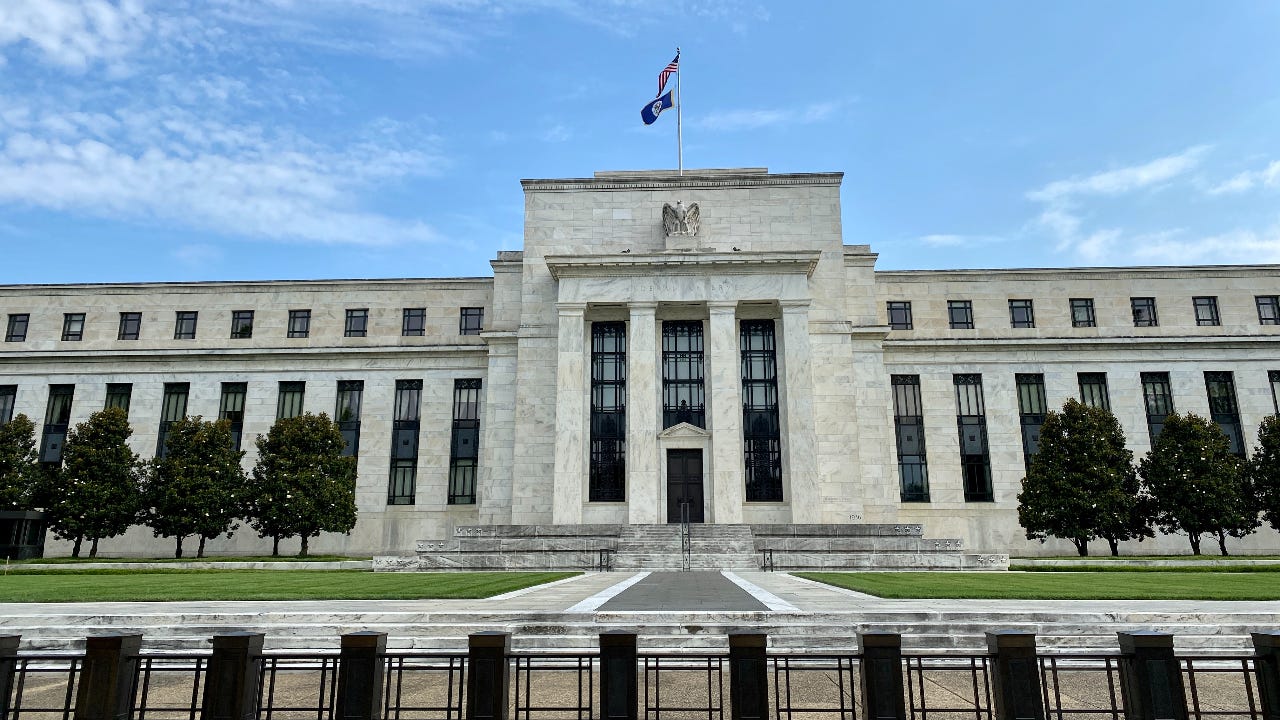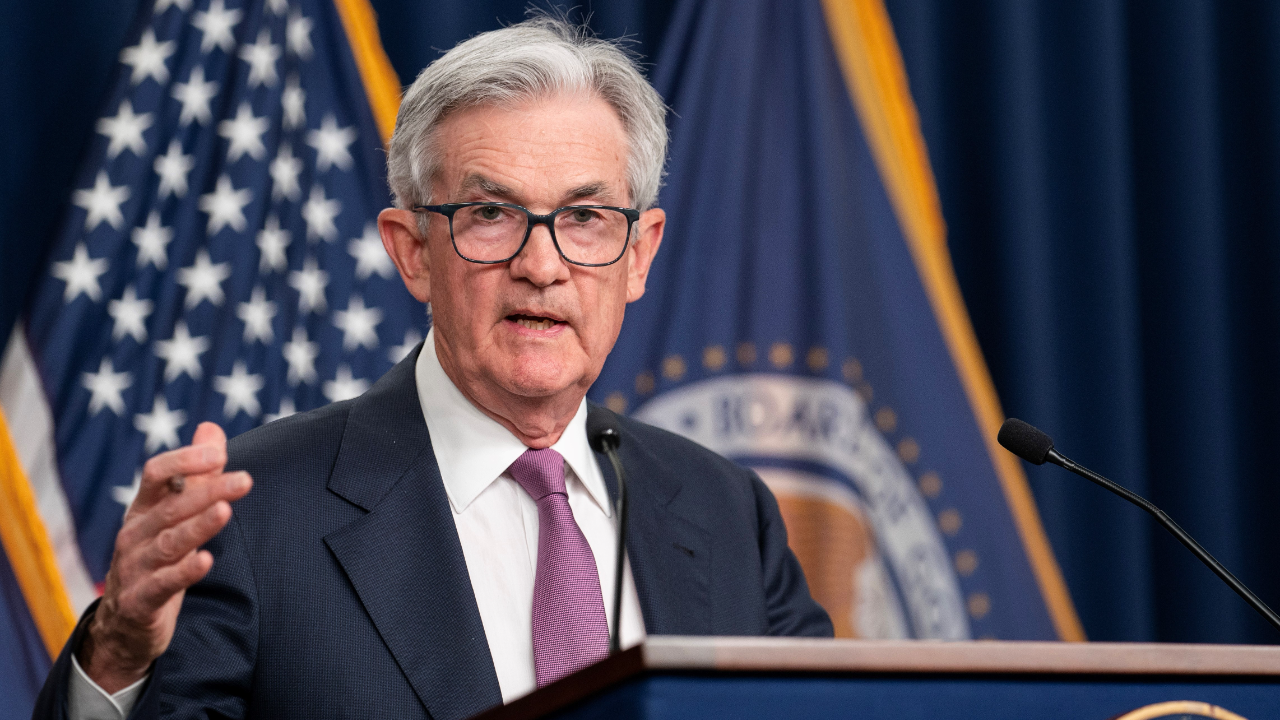What is quantitative easing?

The Federal Reserve typically slashes interest rates in recessions to revive an ailing economy — but in more severe crises, it might not be enough to shore up growth.
When desperate times call for desperate measures, the Fed breaks out unconventional tools to keep borrowing costs cheap and access to credit liquid. One such policy has become a household name among investors and Fed watchers in the days since the Great Recession of 2007-2009: quantitative easing.
A tricky task, however, can be walking back that extra stimulus after the financial system recovers, a challenge officials are undoubtedly going to wrestle with in 2022 as inflation soars to a 40-year high.
Here’s everything you need to know about the Fed’s recession-fighting tool.
Quantitative easing definition
Quantitative easing (also known as QE) is a nontraditional Fed policy more formally known as large-scale asset purchases, or LSAPs, where the U.S. central bank buys hundreds of billions of dollars in assets, mostly U.S. Treasury securities, federal agency debt and mortgage-backed securities.
The program is considered nontraditional and unconventional because it’s different from what the Fed usually does to guide the U.S. economy: adjusting the benchmark federal funds rate, lowering rates to stimulate growth and raising them to stabilize it.
How quantitative easing works
QE works through open-market trading operations at the regional Federal Reserve Bank of New York. The Fed buys assets through the primary dealers with which it’s authorized to make transactions — financial firms that buy government securities directly from the government with the intent of selling it to others. The Fed then credits banks’ accounts with the cash equivalent in value to the asset it purchased, which increases the size of the Fed’s balance sheet.
“By virtue of taking the bond off the market, it replaces it with cash in the system, meaning there’s now more cash available for lending to consumers, businesses and municipalities,” says Greg McBride, CFA, Bankrate chief financial analyst.
The Fed’s purchases weigh on yields even more because they create demand for those securities, which raises their prices. As interest rates fall, businesses find it even easier to finance new investments, such as hiring or equipment.
Officials turn over all profits to the Treasury, including when those bonds pay out semiannual coupons and reach maturity.
The purpose of quantitative easing
But how it works isn’t as important as what it achieves. QE helps add more life to the financial system in times of severe distress by pushing down interest rates on the longer-dated borrowing not directly influenced by the fed funds rate.
That’s because Treasury yields are another important benchmark interest rate that influence many other consumer products, such as mortgage and refinance rates. It can also ultimately drive down corporate and municipal bonds, along with consumer and small business loan rates.
“This usually gets done when we’re coming out of some horrendous crisis,” says Dec Mullarkey, managing director of investment strategy at SLC Management, the asset management arm of Sun Life Financial. “The intent is, you are going to increase lending, opportunity and borrowing, and that will create growth in the economy.”
Because QE replaces bonds in the system with cash, it effectively increases the money supply. The process also helps improve market functioning by vacuuming up debt that’s been piling up on the market for a while. That makes it easier for banks to free up capital, so they can underwrite more loans and buy other assets.
“It’s like dropping a rock in a pond and seeing the waves ripple out in every direction,” Bankrate’s McBride says.
Example of quantitative easing
Despite being a relatively unconventional tool, many central banks have tried their hands at some form of QE, with the policy implemented across Europe and Asia.
The Bank of Japan was the first central bank in the modern era to attempt to rescue a sputtering economy through a policy it called quantitative easing. After facing a financial crisis in the 1990s, the Bank of Japan in March 2001 started growing the amount of bank reserves in the system.
Account balances increased to about ¥35 trillion — what’s roughly $303 billion today — mainly through monthly purchases of Japanese government bonds (JGBs). Eventually, however, the Bank of Japan transitioned away from buying government debt and into that of privately issued debt, purchasing corporate bonds, exchange-traded funds and real-estate investment funds. The program officially concluded in March 2006.
The Bank of England introduced a similar QE program during the global financial crisis of 2008, purchasing in total about £200 billion worth of government debt, mainly gilts. England’s central bank has since made three more forays into QE, in response to the European debt crisis, Brexit and the coronavirus pandemic.
Quantitative easing in the U.S.
The Fed announced the first round of QE, known as QE1, in November 2008. It officially kicked off in March 2009 and concluded a year later, with the U.S. central bank purchasing $1.25 trillion total in mortgage-backed securities, $200 billion in agency debt and $300 billion in long-term Treasury securities.
A second round, dubbed QE2, was then announced in November 2010, followed by another iteration known as Operation Twist, and then “QE3.” In August 2007, before the financial crisis hit, the Fed’s balance sheet totaled about $870 billion. By January 2015, after those large-scale asset purchases had occurred, its balance sheet swelled to $4.5 trillion.
Coronavirus pandemic-era QE makes those purchases look like mere breadcrumbs. After slashing interest rates to zero in an emergency meeting on March 15, 2020, the Fed said it would buy at least $500 billion in Treasury securities and $200 billion in agency mortgage-backed securities.
Then, as markets kept sputtering days later, the Fed effectively handed out a blank-check to the program, pledging to buy those same assets “in the amounts needed to support smooth market functioning and effective transmission of monetary policy to broader financial conditions.” Only starting in June 2020 did the Fed officially announce that it’d purchase $80 billion worth of Treasury securities and $40 billion mortgage-backed assets a month.
Since the coronavirus crisis, the balance sheet has ballooned to above $8.9 trillion, the largest level in history.
The Fed can only purchase government-backed debt under its current mandate, though it can get around those guidelines in emergency situations by creating a special vehicle with funds from the Treasury as a backstop.
How quantitative easing can impact you
Some experts in the aftermath of the Great Recession questioned whether QE could lead to runaway inflation by adding too much liquidity into the system. That never happened, with price pressures averaging at 1.7 percent in the years afterward and before the pandemic.
The critique, however, is alive again today, as consumer prices in January soared 7.5 percent after holding at the highest level in decades for the entirety of 2021.
Price pressures have also originated from disrupted supply chains and goods shortages, an avenue that the Fed doesn’t directly control. But some economists argue that the Fed’s massive QE efforts might have spurred too much demand, and the financial system can’t currently keep up. After all, the labor force is still short of 2.9 million positions since the pandemic.
But one aspect of inflation has appeared to be a given when it comes to QE: stock valuations. Because the program pushes down bond yields, other arguments purport that it facilitates more risk-taking among investors, pushing them into higher-returning investments, like stocks and real estate. Even though some experts warn that could lead to asset bubbles, it might also generate growth in economic activity, according to McBride.
Why quantitative easing isn’t free from risk
Asset purchases are a tricky balancing act for Fed officials because they’re often hard to unwind, even in the face of high inflation.
The Fed, for example, hasn’t wanted to cut markets off cold turkey from a QE program as massive as that of the coronavirus pandemic era. Officials fear doing so could prompt an unduly harsh market reaction, perhaps tightening conditions so much that it leads to poor economic outcomes.
Instead, in November 2021, they started gradually slowing how many bonds they’re buying each month, until those purchases gradually hit zero. The Fed’s looks set to wrap that process — known as taper — by mid-March.
After that comes the complicated process of rolling assets off the balance sheet: the mirror to QE, often dubbed quantitative tightening, where the U.S. central bank actually lets bonds roll off of its balance sheet.
History suggests it won’t be an easy process. The Fed shrank its balance sheet by about $1 trillion in the years after the Great Recession, but investors grew apprehensive the longer that went on. Stocks in December 2018 had their worst month since the Great Depression when Powell described the process as being on autopilot. Flash forward to the fall of 2019, and the Fed ultimately started growing its balance sheet again after dysfunction in the repurchase agreement, or repo, market indicated that it might’ve taken the process too far.
Other experts have argued that QE might not boost borrowing and lending as much as intended, given it’s a policy introduced in deep recessions when banks are pickier and consumers are more frugal.
“All the academic studies show it helped a little, but no one’s saying this is a home run,” SLC’s Mullarkey says. “Banks in particular did their due diligence and were fairly strict on lending guidelines. It didn’t flow into consumers the way you might’ve expected, and consumers in general pulled back on borrowing.”
Bottom line
If you were lucky enough to refinance your mortgage to a lower rate in 2020, you can send your thank you letter to the Fed. Mortgage rates fell below 3 percent in the year, largely thanks to the Fed’s efforts.
That represents the most direct way you can feel the impact from QE — and if it’s not in your wallet, it’s in your 401(k).
“It is a way for the Fed to reduce borrowing costs for a much broader segment of the borrowing public,” Bankrate’s McBride says. “This gives the Fed more of a direct impact on things like mortgage rates and car loan rates, than their traditional tool — the fed funds rate — which tends to have the most pronounced impact on deposit rates, credit card rates and home equity lines of credit.”
Learn more:
- 6 ways the Fed’s decisions impact you
- How much will the Fed raise interest rates in 2022? Here’s what experts are saying
- What is the average interest rate for savings accounts?






